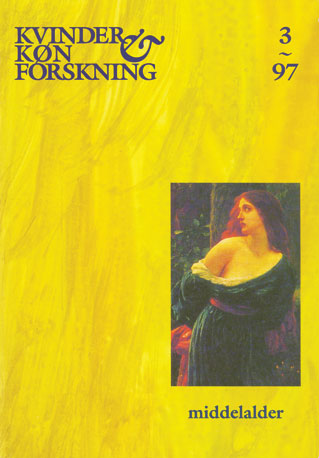For hendes ansigt skinnede som solen
DOI:
https://doi.org/10.7146/kkf.v0i3.28484Resumé
The Gernman abbess and mystic Hildegard of Bingen (1098-1179) developped a richly nuanced theology of the feminine. At the heart of her spiritual world stands the numinous figure she called Sapientia or Caritas: Wisdom or Love, a theophany of the feminine aspect of the divine. In Hildegard's visionary work De operatione Dei, "The Book of Divine Works", written between 1163-1173, Caritas/Sapientia plays an important part. She is the central figure in five out of the ten visions, that comprises De operatione Dei. The first two visions picture Caritas as Anima Mundi, the world soul - the divine presense in the cosmos - and Creatrix, who creates the world by existing in it as an eternal, circling motion. The eighth vision presents Caritas/Sapienta as the "living fountain", that both quickens and reflects all creatures, and inspires the prophets, including Hildegard herself. The theme of the ninth vision is "Wisdom's vesture". Because Wisdom is both a cosmic and a microcosmic figure, her garb can represent the workmanship og either God or man. In the tenth vision Caritas rests in the center of the wheel of eternity and history, and is presented as the eternal archetype of the Virgin Mary. Besides being a theological necessity as mediator of creation, incarnation and salvation Hildegard's feminine divine also serves as a model for women, particularly consecrated virgins, who represent the feminine divine on earth.Downloads
Publiceret
1997-10-29
Citation/Eksport
Istoft, B. (1997). For hendes ansigt skinnede som solen. Kvinder, Køn & Forskning, (3). https://doi.org/10.7146/kkf.v0i3.28484
Nummer
Sektion
Artikler
Licens
Udgivelser i Kvinder, Køn og Forskning er beskyttet under Creative Commons License: CC Attribution-NonCommercial 4.0

